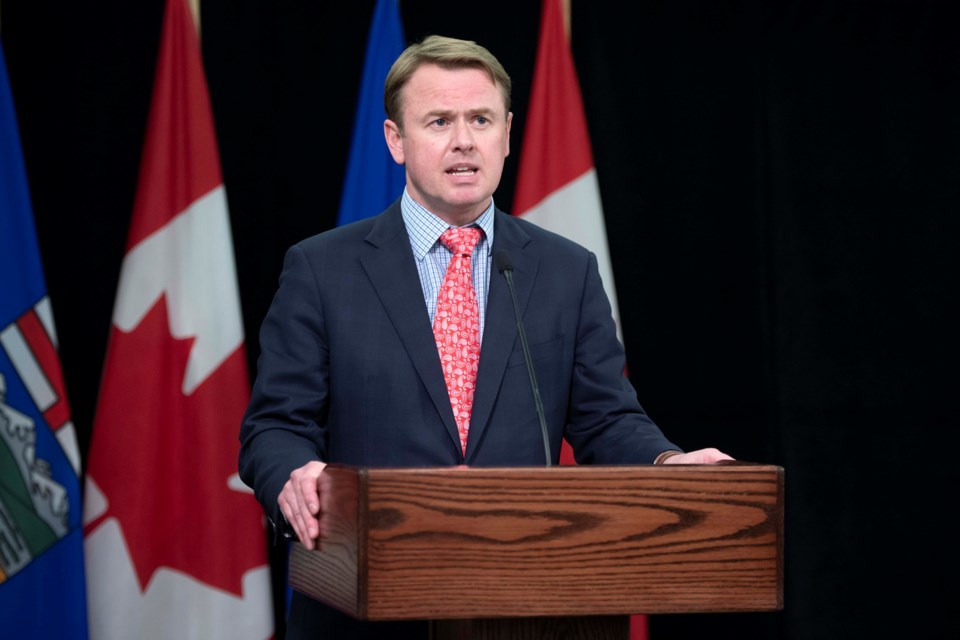Housing advocates and rural leaders say the promise of thousands of new and refurbished continuing-care beds is great news for local rural communities.
On July 9, Alberta Minister of Health Tyler Shandro announced more than 6,000 continuing-care beds would be built or refurbished across the province in the coming years, with 343 beds added this year in Calgary, Edmonton, High Level, Medicine Hat, Red Deer, Valleyview, and Westlock. Some 2,600 beds were added in 26 communities in 2020.
Raymond Cormie, chief executive officer of Homeland Housing, an organization that manages seniors' housing facilities with a variety of living options, said they are thrilled with the announcement.
Homeland Housing will be managing 45 of the 59 new beds announced in Westlock, with the beds being split between dementia care and supportive living. Cormie said the beds are important, as they allow for residents to age in their own communities.
“It allows them to remain in their community where they have fostered friendships and relationships with other people and neighbours over the many, many years that they've lived in that community,” Cormie said.
“Very often, they have family support, and other supports that are available locally within that community that perhaps they wouldn't have if they moved to another community.”
Without adequate funding for seniors' housing in the province, Cormie said often couples may have to be separated based on their different living needs, and may have to travel long distances to see each other.
Westlock Mayor Ralph Leriger, who also serves on the board of Homeland Housing, said the need for seniors' housing is “huge” in Westlock, and there has always been a need for more accommodations.
“Westlock is the agricultural, commerce, and health-care hub for a fairly large trading area,” Leriger said.
The local population is also aging, Leriger said, with many people moving from their farms into the town in their aging years.
Being able to have appropriate care for seniors in the local community is important, Leriger said, and the additional beds will help alleviate pressure on hospitals, where many residents are forced to wait for a supportive-living or care bed to free up.
“We do get patients in acute care in our hospital, taking up beds, and they need to move to (supportive-living) bed, so that is where it will really help, as well as it will take the pressure off continuing care,” Leriger said.
St. Albert Coun. Natalie Joly, who serves as the St. Albert representative for Homeland Housing, said it is critical to offer supports that allow residents to continue to live in their own communities.
"Staying in one’s own community means staying close to family, friends, and support systems, all of which support positive health outcomes,” Joly said.
In St. Albert, there is consistently a wait list for affordable and appropriate seniors' housing.
President of Rural Municipalities of Alberta, Paul McLauchlin, said the capacity for seniors' care in the province is sorely needed, especially with many communities facing an aging population.
Some towns in central Alberta have some of the highest populations of seniors, by percentage, by any town in Canada.
“There is going to be a need to actually lessen the financial burden on some of the seniors as well as municipalities because we actually are part of the requisition for (seniors' care),” McLauchlin said.
But capacity is expected to be a huge problem in many communities because of aging baby boomers, McLaughlin said, and funding all types of seniors' housing supports, from home care to supportive living, is important to meet the needs of older Albertans.
Over the next 20 years, the number of seniors in Alberta is expected to double, up to 1.1. million, which will increase the need for continuing-care services by 62 per cent by 2030.
“I'm seeing that more and more – that folks just will not go into a facility, so they literally will stay at home for as long as possible,” McLauchlin said, adding they may skip several types of care in the continuum of care, which makes predicting the needs for seniors' homes complex.
Shandro announced the province will bring back a new version of the Affordable Supportive Living Initiative program, which will cost $400 million in operational funding.
"Taking innovative approaches to develop additional continuing-care capacity is critically important," Shandro said.
"Through this work, more Albertans will have access to high-quality continuing care, now and in the years ahead."
Of the 6,000 beds being replaced, Shandro estimated 2,200 of them will be new spaces, and 3,800 will be replacements.
The increased funding will be directed to rural areas, to allow residents to age closer to home.
Of the 343 beds added this year, 25 of them will go to High Level, 31 to Medicine Hat, 10 to Red Deer, 15 to Valleyview, and 59 to Westlock. Calgary will receive 190 beds, while Edmonton will get 13.
In 2020, the government announced the opening of more continuing-care beds in communities across the province, including 14 in Brooks, 148 in Airdrie, 74 in Drayton Valley, 26 in Drumheller, 67 in Fort McMurray, and a slew in other rural communities.
Read more from StAlbertToday.ca



